The Idea
COBRA will use CdZnTe semiconductor detectors to search for rare double beta-decay processes. The largest CdZnTe detectors which can be built by current crystal growth technology have a size of about 1 cm3 which corresponds to roughly 6 grams. As much larger source masses are required, the crystals will be arranged in a large 3 dimensional array which can easily be extended as required.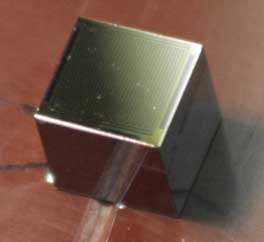
Double Beta Decay
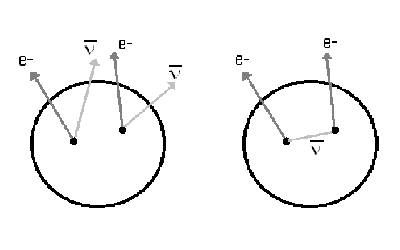
Double Beta Decay is a rare process in which two nuclei in the same nucleus simultaneously beta decay, releasing two electrons and two anti-neutrinos:
Experimental Status
A number of R&D stages are required to prove the validity of the COBRA technique for ßß measurements.Proto-type setup
In the current phase of the experiment, four 1cm3 crystals are being operated in the Gran Sasso laboratory. The detector array is shielded by clean copper and lead. Additionally, a boron-loaded polyethylene and paraffin neutron shield is installed outside to prevent neutrons entering the array. This avoids background events from neutron capture on 113Cd which has a very large cross-section.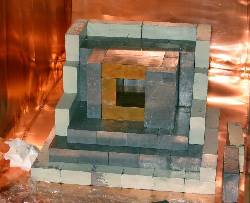
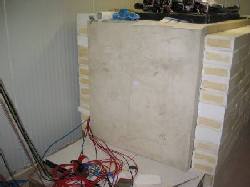
64 Crystal setup
In Autumn 2005, the next stage of the experiment will be installed in the Gran Sasso laboratory. Sixty four crystals will be mounted in a 4*4*4 array within the existing background shield. With this array all the basic principles of signal detection, data acquisition, and background reduction will be explored including the use of coincidences between crystals as a method of background rejection.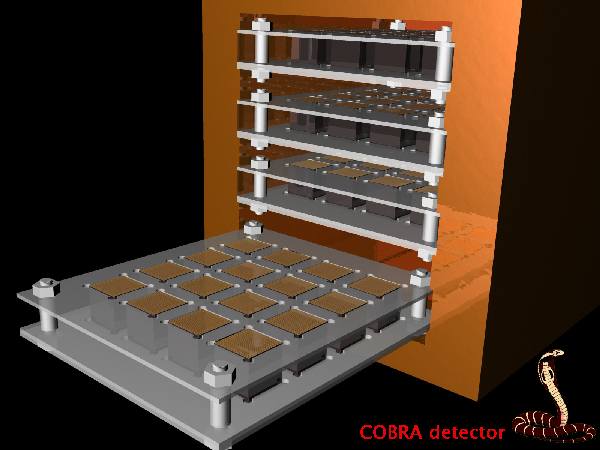
A Very Large Array
The ultimate aim of the COBRA experiment is to detect extremely rare 0&nußß decays which requires a much larger mass of candidate isotopes. Therefore, after the validity of CdZnTe as a detector material has been confirmed, a very large array of crystals (approximately 100kg) is proposed.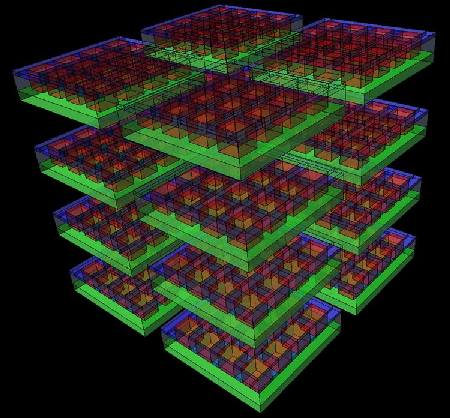
Advantages of CdZnTe
There are a number of reasons why CdZnTe is a suitable candidate for 0?ßß searches: Source = Detector.
Using the same material as both the source of ßß-decay isotopes and the detector of the emitted electrons reduces the amount of material in the experiment and thus minimises the amount of background from naturally occurring radioactive isotopes in the experiment. The electrons emitted in ßß-decays can be detected with a high detection efficiency in the semiconductor.
Candidate Isotopes.
CdZnTe contains 9 ßß-decay candidates, all of them can be studied in just one experiment. The most promising candidate is 116Cd. With a Q-value of 2.8 MeV the experimental signature of this decay lies above the highest naturally occurring gamma-line from 208Tl decay at 2.614 MeV. 130Te is also a promising candidate with a natural abundance of 34.5 % and a high Q-value of 2.53 MeV. ß+ß+ decays of 106Cd can also be searched for in this material.
Good Energy Resolution.
3.5 % FWHM at 662 keV are commonly achieved with 1 cm3 CPG-detectors commercially available. 2.2 % FWHM at 2.614 MeV has been measured in the COBRA test facility. We are also researching the possibility of improving the energy resolution by cooling the crystals by 10-20 degrees.
Room Temperature Operation.
Unlike other semi-conductors (eg. Germanium) CdZnTe can be operated safely and efficiently at room temperature so no cryostats are required.
Detector Technology.
Industrial support is available thanks to great interest in medical applications of CdZnTe.
